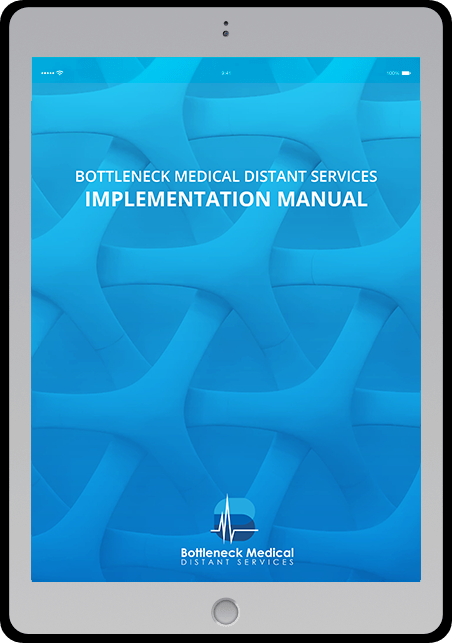Discover how it works by scheduling a free consultation with our account specialist.
Signs Your Medical Practice Is in Trouble

Medical practices require effective systems and processes to manage and maintain. Any kinks that are not straightened out could result in burnout, patient dissatisfaction or worse, folding. Here are some signs your practice is in trouble and what you can do to avoid going under.
Sign #1: Workflows are all over the place
Your workflows constantly change depending on small-scale in-house needs and larger industrial developments. The introduction of electronic health records to healthcare came with a massive overhaul of medical practices. Everyone had to adjust to the transition from paper-dependent processes to digitized record-keeping.
Implementing even seemingly minor changes within your practice can cause a dozen smaller ones. When you decide to install cameras in your patient reception areas for improved surveillance, you will have to revise the consent clauses of your intake forms. Secondary to this change is the need to inform patients about this modification as they come in-an addition to your front staff’s workflow.
These little changes eventually birth wide-ranging amendments to your workflows. When your processes are thrown into shambles, your staff members suffer.
Spotting the mess
If you want to know what a practice is like, take a good look at the staff, not the doctors. Most practice leaders undergo training to be stress-tolerant and to be the emotional buffers for their staff and patients when things go south. They will most likely be the last to double over.
Hence, the litmus paper test to spot disorderly workflows in a practice is the state of the staff. When you look for the signs, ask yourself some of these questions:
- Do the staff members keep repeating themselves? Do three of your team members unknowingly ask your patients the same set of questions before the examination? Do you hear the same information already covered by someone else in the team not five minutes prior?
- Do you have a daily schedule? If so, how closely can you stick to it without being so high-strung? Do you and your staff still have energy left for personal tasks after office hours?
- Do your staff know their duties? And if they do, do they find their tasks overlapping at times? How often does someone in the team begin a task only to find out that another team member has already completed it?
- Are your communication lines clear and open to everyone? Do your team members voice their questions and feedback as needed? Do they effectively relay to patients the rationale behind their treatment plans?
If your workflows are not optimized, then your staff will receive the brunt of it all. They start to take up too much work to cover holes in the processes instead of speaking up with recommendations and feel the pressure of keeping up with the pace. In turn, your patients become collateral damage.
Sign #2: Your patients are dissatisfied
Another indicator of trouble in medical practice will be the level of patient satisfaction. After all, deteriorating workflows will ultimately affect the patient’s journey. When staff members are lost, how will they guide the clients?
To understand the patient’s sentiments at a granular level, you can ask these questions:
- Have you mapped out the patient’s journey? If yes, is it complete by the time they exit your doors? Or do they need to call the clinic for clarifications that should have been addressed during their scheduled appointment?
- Do patients complain of repeating themselves? This ties the situation where your staff members have no clear demarcation of who gets to conduct the pre-examination inquiry. As a result, do your patients feel and voice any bit of discomfort at this redundancy?
- Do patients understand their treatment plans? Are they able to ask relevant questions that come from a place of comprehension?
- Do patients understand your billing process? Do they know how insurance verification works? Are your staff members able to explain this process to the patients?
When patients are not able to see the bases of the processes that involve them, this dampens their overall appreciation of your efforts. They then become jaded and disinterested. Worse, they lose the will to complete their treatment or schedule any follow-up appointments.
Sign #3: You and your staff are burned out
In a previous blog, we covered the symptoms of physician burnout, based on an article published by Family Practice Management. These signs, while descriptive of physicians, seem to apply to staff members as well.
Workplace-induced burnout manifests in three ways (in 3 D’s):
- Declining health. Stress eats away at a person’s physical, mental and emotional health. You always feel tired and the fatigue worsens over an extended period of time.
- Depersonalization. Because of the constant feeling of weariness, you feel detached from your work. You hardly feel connected to your patients or your colleagues, if at all.
- Decreased career satisfaction. You feel stuck in everyday motions that no longer make sense. There is the omnipresent feeling of unhappiness and the notion that you can do better, but have no energy to pursue greener pastures.
When burnout has affected even the most resilient of your staff members-and that includes you-, then something needs to change.
Stop the Vicious Cycle
Once you have identified the areas of your practice that need improvement, it is time to intervene.
Get together with your staff and discuss what needs to be done to address gaping workflow issues. Redefine job roles and responsibilities to avoid overstepping and promote maximum efficiency. Encourage open communication and show receptiveness to honest feedback.
Identify your practice’s needs. Do some tasks that your team has unwittingly taken up along the way require the need for a new staff member? If yes, ask yourself whether you must hire on-site or outsourced staff.
Any extra help that will alleviate the burden on your current staff is a good investment. Give them the opportunity to grow in the roles they were hired for. Give yourself the chance to serve your patients at a level that you trained for.
At BMDS, we seek to guide you in improving your practice with the help of medical distant services. Walk with us as we show you more of what it is like to be part of this revolutionary step in medical practice.
Stay Updated
Subscribe To Our Newsletter For Updates And A Free Copy Of The Bottleneck Medical Virtual Services Implementation Manual.

